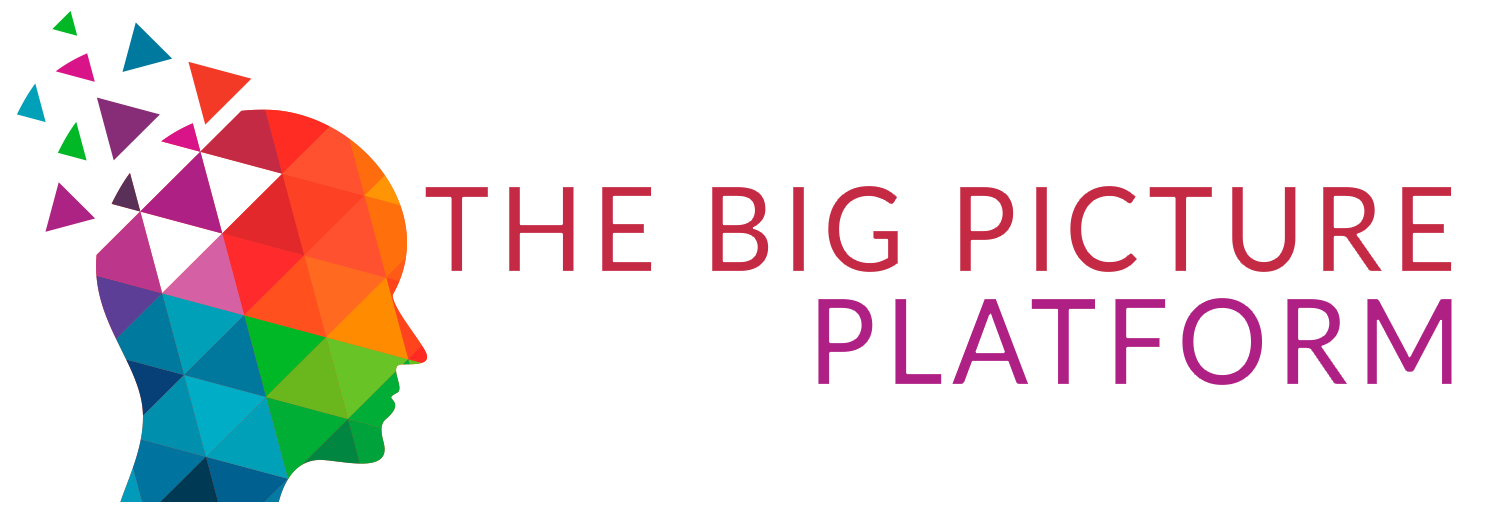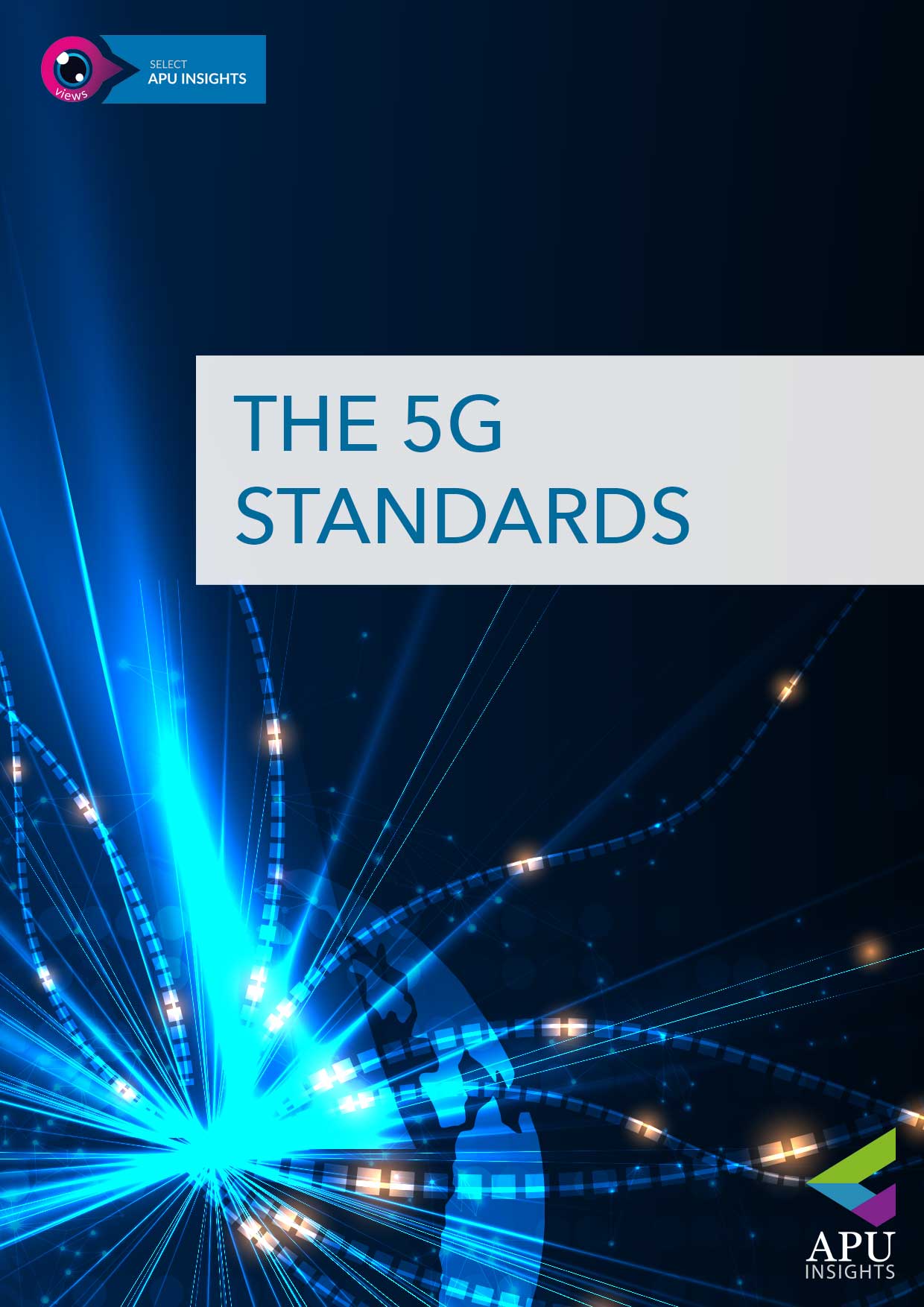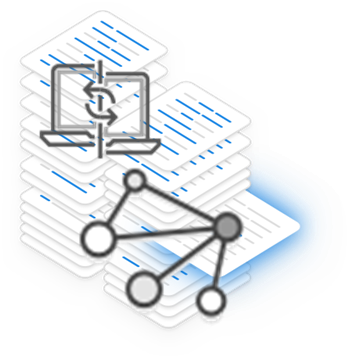The 5G standards
Dr. Evangelo Damigos; PhD | Head of Digital Futures Research Desk
- 5G
- Connected Intelligence
- Sustainable Growth and Tech Trends
- Emerging Technologies
Publication | Update: Sep 2020

Standardization of 5G started in early 2016 under the umbrella of the 3rd Generation Partnership Project (3GPP), the key standardization body for global mobile communication systems. A first wave of standards is available through the 3GPP Release 15 and a second wave is under development and should be available by 2020.
The new 5G mobile networks are expected to arrive in 2019 or 2020, but before that can happen, the 5G standards must be developed. Consensus is vital in the interest of 5G standard cohesiveness.
According to SDx Central research, operators and vendors who will have a stake in the 5G future are deeply involved in this standards process. U.S. operators such as AT&T, Sprint, T-Mobile, and Verizon are engaged in ongoing 5G trials so that their findings will contribute to the 5G standard. Vendors such as Cisco, Ericsson, Intel, LG, Nokia, Qualcomm, and Samsung are obviously financially motivated to see their intellectual properties included in the 5G standards process.

The three main 5G usage scenarios — Enhanced Mobile Broadband, Massive Connectivity, and Ultra-high reliability & Low Latency— and their use cases. Source: ResearchGate
The primary 5G standards bodies involved in these processes are the 3rd Generation Partnership Project (3GPP), the Internet Engineering Task Force (IETF), and the International Telecommunication Union (ITU).
3GPP: This international body is a communications-focused organization made up of seven telecommunications standard development organizations called “organizational partners.” It is composed of supporting-member companies like the aforementioned companies. The organization is charged with formulating the 5G technical specifications, which ultimately become standards.
In mid-2017, the 3GPP Technical Specifications Groups agreed on a detailed workplan for Release 15 — the first release of 5G specifications. The workplan included a set of tasks and checkpoints to guide ongoing 5G studies of next-generation architecture and the 5G New Radio (NR), focusing on enhanced mobile broadband, ultra-reliability and low latency, frequency ranges, and the importance of forward compatibility in radio and protocol design.
IETF: The IETF is the standards body coming up with the key specifications for virtualization functions evolving IP protocols to support network virtualization. For example, IETF is pioneering Service Function Chaining (SFC), which will link the virtualized components of the 5G architecture—such as the base station, serving gateway, and packet data gateway—into a single path. This will permit the dynamic creation and linkage of Virtual Network Functions (VNFs).
Other new technology under development by IETF includes routing-related testing, including protocols for distributed networking, segment routing, and path computation to meet the constraints of the 5G NR. IETF works synergistically with 3GPP on the development of 5G, covering not only new technology under IETF development but also new uses of existing technologies.
ITU: The ITU is a Geneva-based United Nations agency focused on information and communication technologies. It coordinates the global sharing of radio spectrum. In 2015, the ITU identified three spectrum bands that will be used for 5G, and in 2016, it refined the criteria for the selection of 5G radio interface technologies.
According to the Citi GPS: “Global Perspectives & Solutions on 5G Technology,” the 5G standards, as proposed by the International Telecommunications Union and developed by 3GPP, improve on four central attributes, including lower latency, improved device density, improved speed and capacity, and dynamic spectrum access.
:

Lower Latency. Latency is the delay between a request for information being made and the time the transmission begins; that delay will drop below 10 milliseconds with 5G versus 50 milliseconds or more with 4G LTE. While this may not sound like much, it could mean the difference between an immersive virtual reality experience and a disorienting delay between moving your head and the changing view on the display. Lower latency will be key for emerging applications including autonomous driving, virtual and augmented reality, and mobile gaming.
Device Density. With the 5G standard, it is hoped that the network could connect as many as 1 million devices per square kilometer (0.38 square miles).
This is a 10x improvement over 4G and is key to the potential for vast sensor networks that report back on conditions ranging from air quality and humidity to whether a parking spot is available or if a streetlight is out. The Internet of Things depends on networks being able to handle a vast number of intelligent devices and reporting back to the network.
Speed and Capacity. As with any generational improvement, 5G will allow for faster average and peak speeds than previous standards. This bump in speeds, however, is being created by using more spectrum than was previously capable before rather than a significant leap in spectral efficiency. We equate wireless network technology to a highway: Spectral efficiency, or bits per hertz, is like the speed limit, while megahertz of spectrum is the number of lanes. The speed limit is expected to rise just 15%–20%, while the number of lanes is increasing by 5–10x as we move from 4G to 5G.
Dynamic Spectrum Access: A fourth important innovation with 5G is ‘network slicing,’ or the dynamic allocation of network capabilities based on the application. This would allow, for example, guaranteed low latency and reliability for first responders in an emergency while prioritizing speed for smartphone users. It allows network owners to customize the offer, and their network capabilities, to price the solutions needed by the end user rather than selling a one-size-fits-all product. (See earlier chapter on Dynamic Spectrum Access.)
 Digital Themes: 5G, Connected Intelligence, Sustainable Growth and Tech Trends, Emerging Technologies
Digital Themes: 5G, Connected Intelligence, Sustainable Growth and Tech Trends, Emerging Technologies

HTML
 Access Rights | Content Availability:
Access Rights | Content Availability: 


Objectives and Study Scope
This study has assimilated knowledge and insight from business and subject-matter experts, and from a broad spectrum of market initiatives. Building on this research, the objectives of this market research report is to provide actionable intelligence on opportunities alongside the market size of various segments, as well as fact-based information on key factors influencing the market- growth drivers, industry-specific challenges and other critical issues in terms of detailed analysis and impact.
The report in its entirety provides a comprehensive overview of the current global condition, as well as notable opportunities and challenges.
The analysis reflects market size, latest trends, growth drivers, threats, opportunities, as well as key market segments. The study addresses market dynamics in several geographic segments along with market analysis for the current market environment and future scenario over the forecast period.
The report also segments the market into various categories based on the product, end user, application, type, and region.
The report also studies various growth drivers and restraints impacting the market, plus a comprehensive market and vendor landscape in addition to a SWOT analysis of the key players.
This analysis also examines the competitive landscape within each market. Market factors are assessed by examining barriers to entry and market opportunities. Strategies adopted by key players including recent developments, new product launches, merger and acquisitions, and other insightful updates are provided.
Research Process & Methodology

We leverage extensive primary research, our contact database, knowledge of companies and industry relationships, patent and academic journal searches, and Institutes and University associate links to frame a strong visibility in the markets and technologies we cover.
We draw on available data sources and methods to profile developments. We use computerised data mining methods and analytical techniques, including cluster and regression modelling, to identify patterns from publicly available online information on enterprise web sites.
Historical, qualitative and quantitative information is obtained principally from confidential and proprietary sources, professional network, annual reports, investor relationship presentations, and expert interviews, about key factors, such as recent trends in industry performance and identify factors underlying those trends - drivers, restraints, opportunities, and challenges influencing the growth of the market, for both, the supply and demand sides.
In addition to our own desk research, various secondary sources, such as Hoovers, Dun & Bradstreet, Bloomberg BusinessWeek, Statista, are referred to identify key players in the industry, supply chain and market size, percentage shares, splits, and breakdowns into segments and subsegments with respect to individual growth trends, prospects, and contribution to the total market.
Research Portfolio Sources:
Global Business Reviews, Research Papers, Commentary & Strategy Reports
M&A and Risk Management | Regulation

The future outlook “forecast” is based on a set of statistical methods such as regression analysis, industry specific drivers as well as analyst evaluations, as well as analysis of the trends that influence economic outcomes and business decision making.
The Global Economic Model is covering the political environment, the macroeconomic environment, market opportunities, policy towards free enterprise and competition, policy towards foreign investment, foreign trade and exchange controls, taxes,
financing, the labour market and infrastructure.
We aim update our market forecast to include the latest market developments and trends.
Review of independent forecasts for the main macroeconomic variables by the following organizations provide a holistic overview of the range of alternative opinions:
As a result, the reported forecasts derive from different forecasters and may not represent the view of any one forecaster over the whole of the forecast period. These projections provide an indication of what is, in our view most likely to happen, not what it will definitely happen.
Short- and medium-term forecasts are based on a “demand-side” forecasting framework, under the assumption that supply adjusts to meet demand either directly through changes in output or through the depletion of inventories.
Long-term projections rely on a supply-side framework, in which output is determined by the availability of labour and capital equipment and the growth in productivity.
Long-term growth prospects, are impacted by factors including the workforce capabilities, the openness of the economy to trade, the legal framework, fiscal policy, the degree of government regulation.
Direct contribution to GDP
The method for calculating the direct contribution of an industry to GDP, is to measure its ‘gross value added’ (GVA); that is, to calculate the difference between the industry’s total pretax revenue and its total boughtin costs (costs excluding wages and salaries).
Forecasts of GDP growth: GDP = CN+IN+GS+NEX
GDP growth estimates take into account:

Market Quantification
All relevant markets are quantified utilizing revenue figures for the forecast period. The Compound Annual Growth Rate (CAGR) within each segment is used to measure growth and to extrapolate data when figures are not publicly available.
Revenues
Our market segments reflect major categories and subcategories of the global market, followed by an analysis of statistical data covering national spending and international trade relations and patterns. Market values reflect revenues paid by the final customer / end user to vendors and service providers either directly or through distribution channels, excluding VAT. Local currencies are converted to USD using the yearly average exchange rates of local currencies to the USD for the respective year as provided by the IMF World Economic Outlook Database.
Industry Life Cycle Market Phase
Market phase is determined using factors in the Industry Life Cycle model. The adapted market phase definitions are as follows:

The Global Economic Model
The Global Economic Model brings together macroeconomic and sectoral forecasts for quantifying the key relationships.
The model is a hybrid statistical model that uses macroeconomic variables and inter-industry linkages to forecast sectoral output. The model is used to forecast not just output, but prices, wages, employment and investment. The principal variables driving the industry model are the components of final demand, which directly or indirectly determine the demand facing each industry. However, other macroeconomic assumptions — in particular exchange rates, as well as world commodity prices — also enter into the equation, as well as other industry specific factors that have been or are expected to impact.
Forecasts of GDP growth per capita based on these factors can then be combined with demographic projections to give forecasts for overall GDP growth.
Wherever possible, publicly available data from official sources are used for the latest available year. Qualitative indicators are normalised (on the basis of: Normalised x = (x - Min(x)) / (Max(x) - Min(x)) where Min(x) and Max(x) are, the lowest and highest values for any given indicator respectively) and then aggregated across categories to enable an overall comparison. The normalised value is then transformed into a positive number on a scale of 0 to 100. The weighting assigned to each indicator can be changed to reflect different assumptions about their relative importance.

The principal explanatory variable in each industry’s output equation is the Total Demand variable, encompassing exogenous macroeconomic assumptions, consumer spending and investment, and intermediate demand for goods and services by sectors of the economy for use as inputs in the production of their own goods and services.
Elasticities
Elasticity measures the response of one economic variable to a change in another economic variable, whether the good or service is demanded as an input into a final product or whether it is the final product, and provides insight into the proportional impact of different economic actions and policy decisions.
Demand elasticities measure the change in the quantity demanded of a particular good or service as a result of changes to other economic variables, such as its own price, the price of competing or complementary goods and services, income levels, taxes.
Demand elasticities can be influenced by several factors. Each of these factors, along with the specific characteristics of the product, will interact to determine its overall responsiveness of demand to changes in prices and incomes.
The individual characteristics of a good or service will have an impact, but there are also a number of general factors that will typically affect the sensitivity of demand, such as the availability of substitutes, whereby the elasticity is typically higher the greater the number of available substitutes, as consumers can easily switch between different products.
The degree of necessity. Luxury products and habit forming ones, typically have a higher elasticity.
Proportion of the budget consumed by the item. Products that consume a large portion of the
consumer’s budget tend to have greater elasticity.
Elasticities tend to be greater over the long run because consumers have more time to adjust their behaviour.
Finally, if the product or service is an input into a final product then the price elasticity will depend on the price elasticity of the final product, its cost share in the production costs, and the availability of substitutes for that good or service.
Prices
Prices are also forecast using an input-output framework. Input costs have two components; labour costs are driven by wages, while intermediate costs are computed as an input-output weighted aggregate of input sectors’ prices. Employment is a function of output and real sectoral wages, that are forecast as a function of whole economy growth in wages. Investment is forecast as a function of output and aggregate level business investment.




 Industry: Information, Communication, Technology ICT
Industry: Information, Communication, Technology ICT 
